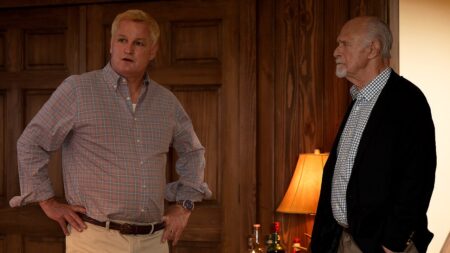The inventor behind classic toys like Lite-Brite, Rock ‘Em Sock ‘Em Robots and many iconic board games has died at the age of 99 after a life of adventure and bringing joy to generations of kids all over the world.
Burt Meyer wasn’t a household name to most, but many of his most famous creations need no introduction, having graced the bookshelves and game rooms of millions of households for more than 60 years.
He got the idea for Rock ‘Em Sock ‘Em Robots after visiting an arcade in the early 1960s with his then-boss, Marvin Glass, when the duo spied a coin-operated machine that let players face off in a simulated boxing match using human-like combatants, the New York Times reported.
Meyer got to work sculpting the models for what would eventually become the best-selling toy, but the project was put on hold when real-life boxer Davey Moore died of a brain injury after a featherweight title fight with Sugar Ramos in 1963, according to the report.
The tragedy reportedly led him to revise the pugilists’ appearance to robots, known as the Red Rocker and the Blue Bomber, to soften the level of violence a bit.
The final version featured a boxing ring and two sets of joysticks players could use to control the battling bots, where a well-timed sock to the jaw caused the spring-loaded head of the recipient to comically pop up.
Rock ‘Em Sock ‘Em Robots was first manufactured in 1964 and remains in production today — in 2011, Time magazine ranked it the 49th greatest toy of all time, and it was prominently featured in the animated Pixar movie “Toy Story 2.”
But Meyer’s favorite creation was Lite-Brite, which let users create collages of colored lights using translucent colored pegs stuck into a holed grid that was covered with a piece of black construction paper to enhance the effect, according to the report.
This time, inspiration struck when he saw a Manhattan building decked out with a luminous display featuring hundreds of small lights.
The Lite-Brite was an instant hit, selling more than 20 million units since being licensed by Hasbro and released in 1967.
Time magazine ranked it 55th in its all-time greatest toy rankings, and it was prominently featured in two 2022 episodes of the Netflix smash-hit series set in the 1980s, “Stranger Things,” which led to a 600% spike in sales, according to the outlet.
During his run of winning concepts in the 1960s, Meyer also lent his creative eye to the creation of the board game Mouse Trap, in which players compete to build a Rube Goldberg-like contraption to capture plastic rodents.
Over the years, games and toys devised by or with the input of Meyer were licensed to companies like Ideal, Mattel, Hasbro, Parker Brothers and Louis Marx and Company.
Meyer parted ways with Marvin Glass in the 1980s to start his own games maker, Meyer/Glass Design, and he wasn’t done cranking out the hits just yet, the Times reported.
His new firm was responsible for popular games including Pretty Pretty Princess, Catch Phrase and the cartoonishly disgusting Gooey Louie, in which players attempted to pluck boogers from the titular character’s oversized nose.
Born April 18, 1926 in Hinsdale, Illinois to a pharmacist father and homemaker mother, Meyer spent two years in the US Navy as an aircraft mechanic before attending West Georgia College and the Institute of Design at the Illinois Institute of Technology, graduating in 1952 with a degree in product design, the report said.
He was an avid adventurer, flying single-engine planes until his late 80s. He also took a 45-day solo bicycle trip from San Francisco to Charleston, scuba-dived in Fiji and the Solomon Islands and visited the North Pole for a 135-mile trek lasting 12 days at the age of 69, according to the Times.
Meyer is survived by his daughter, Sheryl and sons Lee and Steve, the latter of whom was president of Meyer/Glass until its closure in 2006. He also leaves behind six grandchildren and six great-grandchildren.
His wife, Marcia, predeceased him in 2001.
Read the full article here














